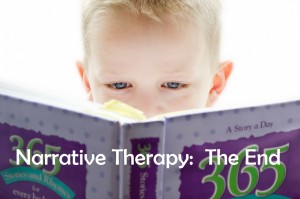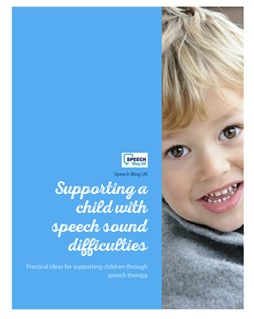This is the next part of our series on narrative therapy. If you missed the other parts, you can find them here – Introduction, who, where, when, what happened and emotions and dialogue.
Today, I’m going to talk about the end of the story. I’ve always found that children with language difficulties find this bit particularly difficult and it can be a challenge to teach as well. Some children struggle with memory and so can’t remember what came earlier in the story. Others find description difficult and so, once the main action of the story is over, they just stop, not realising that anything more is needed.
As ever, the Black Sheep packs are really useful for teaching story endings. I almost always start off with some of their resources about fairy tales from the Speaking and Listening Through Narrative pack. We talk about how familiar stories end, and try to make up alternative endings as well.
Here are some more ideas:-
- At this point in the teaching process, we are usually working on making up whole stories. With younger children, the end can often be very short and simple (“and then they went home” or “they all lived happily ever after”). I teach these simple endings by just using them again and again at the end of familiar stories.
- However, with older children and more complex stories, the ending often needs something more. You need to make sure you have all the loose ends tied up. This may come into talking through problem and solution, or you may choose to focus specifically on endings. Children often add in lots of characters or have lots of exciting things happening one after the other (or all at the same time) and in order for the story to make sense and feel finished, you need to know what happened to all those people or know how each thing turned out. My favourite resource for teaching this is the footprints in the Black Sheep pack. We often use these to make up a story as a group. Each story element (who, where, when etc) has a different colour. Each time a new character is introduced, a new orange footprint is laid out on the floor. If a new event occurs, a new yellow one goes down. We keep going over what has happened, and the visual clue of the footprints helps the children to remember. Then, I get the children to pick the footprints up again as they finish off the story. This helps them to remember the different characters that were introduced and resolve all the different bits of the story.
- Talk about different types of endings – happy, sad, scary etc. See if the children can think of a happy, a sad and a scary ending for the same story. With older children, talk about what sort of endings they like and why.
We have one more post to come on narrative therapy, and that one will focus on generating whole stories. In the mean time though, here is a list of some of the children’s books that we love to use in narrative therapy:-
- Dear Zoo. This is a very simple book, but great for talking about “who” with young children.
- We’re Going on a Bear Hunt. I’m sure this is a familiar book to most people reading. It’s great for talking about places in stories.
- There’s a Monster in My House. Another simple book, but great for talking about characters with little ones.
- Billy’s Beetle. Another great book for talking about characters.
- Peace At Last. A slightly more complex story, but great for description of places in particular.
- Monkey Puzzle. This has lots of characters and some fantastic descriptive language. I use this with older ones to talk about describing characters.
- The Gruffalo. I’m sure you already know this book. It’s actually quite a complex story and usually generates lots of discussion. Also fantastic character description.
- Arnie The Accidental Hero. This is good for slightly older children for talking about emotion and dialogue.
- The Smartest Giant in Town. Lots of different characters and locations. Also good for clothing vocabulary.
- Scaredy Cat and Boo. Good for older children, thinking about emotions and how they change in different situations.
- Dragon Stew and No-Bot, the Robot with No Bottom
– just lovely engaging stories that get children enthusiastic about story-telling.
What other books do you use for narrative therapy?
You can read the last post in this series about whole stories, by clicking this link.







Leave a Reply